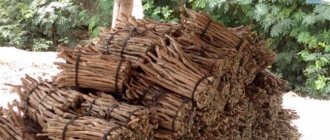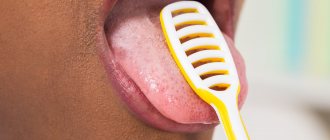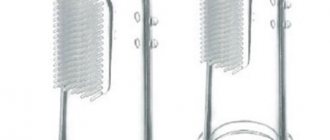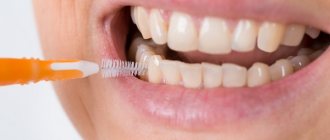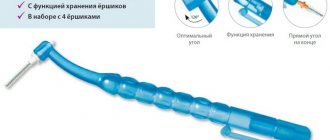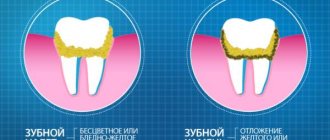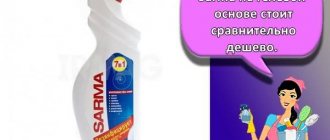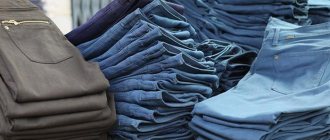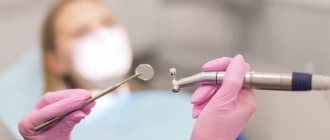Fortunately, there is an alternative to industrial products - a natural and safe miswak stick, which copes with oral hygiene and without the use of toxic toothpastes.
What is miswak (sivak) for brushing teeth?
Miswak, or siwak, is a brush for cleaning teeth, which is a piece of a branch or tree root , split at the end like a brush. Traditionally, miswak is made from arak (mustard tree), but olive, orange, neem, and Pila (Salvadora Persian) wood are also used.
By the way! Sivak has been known in the East since pre-Muslim times, but does not lose its popularity even today. “Chewing sticks” are also in demand in the countries of Southeast Asia.
Standard method of brushing teeth Pakhomova G.N.
This method is recommended by most Russian dentists. It was invented by G.N. Pakhomov - professor of dentistry.
- Cleaning begins from the upper jaw in the following order - from the right molars to the front ones, then finishes on the left molars.
- On the lower jaw, the left major ones are cleaned first, then the anterior ones, and lastly the right molars.
- The front and back surfaces are cleaned with sweeping movements from bottom to top, with the brush head at an angle of 45° to the gum.
- It is important to make 10 movements for each tooth.
- Contaminants from the chewing side are removed by moving the head back and forth.
- To clean the front teeth, the brush is placed vertically and moved in a sweeping motion.
The Pakhomov method helps to effectively clean the oral cavity, but for the interdental spaces additional means are needed - irrigators, threads and a tongue scraper.
Stick composition
Miswak is a completely natural dental care product. These “magic wands” contain more than 25 natural ingredients that are beneficial for dental health :
- tannic acid;
- bicarbonate of soda;
- cellulose;
- essential oils;
- fragrant resins;
- alkaloids;
- mineral salts;
- fluorine;
- sulfur substances;
- silica;
- vitamin C;
- saponins;
- styrene;
- flavonoids;
- trimethylamine.
Important! Miswak is a 100% natural, natural teeth cleaner, it is simply a part of the plant.
Unlike conventional toothpaste, it does not contain any harmful substances such as sodium lauryl sulfate, parabens, propylene glycol, benzyl alcohol, dyes, fragrances, etc.
Advantages
A natural “brush” (another name is sivak) has advantages comparable to the useful qualities of modern cleaning devices. Judge for yourself: miswak contains anti-inflammatory and antiseptic substances, the presence of which makes applying paste or powder to the teeth unnecessary.
Among the “advantages” is the presence in the composition:
- fluorine;
- tannins;
- flavonoids;
- alkaloids;
- fragrant resins;
- essential oils.
In terms of content, the stick of the Salvadora Persian tree is similar to toothpaste and in some ways even surpasses it: the components are natural.
For those who are wary of “chemistry”, this point is important. Fluoride strengthens enamel, tannins and flavonoids prevent inflammation, essential oils stop the proliferation of bacteria, and give fresh breath. A nice bonus: miswak contains silicon dioxide, which whitens teeth.
This occurs without damaging the enamel, which, unfortunately, is experienced by patients after professional whitening in the dental office. Silicon destroys pigmentation and fights soft plaque. This is not all the advantages of the siwak. It is convenient for patients because:
- fits in a plastic bag that you can simply put in your pocket;
- Available for use by people of all ages - from babies to the elderly.
A modest stick - a piece of a branch of an outlandish Asian plant - is inexpensive, but has so many advantages that it’s time for many of us to think about buying it. Many - but not all? Yes, there are contraindications.
Beneficial features
The rich natural composition of the stick determines its excellent properties for maintaining dental health and treating them.
- Thanks to silicon, miswak helps whiten teeth and remove stains on enamel.
- Sulfur and galvanic substances prevent bacteria from growing on the gums and between the teeth.
- Trimethylamine in a stick will relieve inflammation and soothe pain during teething.
- Fluoride in the stick protects the teeth of adults and children from caries.
- Tannic acids and tannin relieve bleeding and sensitivity of the gums, heal wounds, have an astringent effect, protect against inflammation, protect against stomatitis and gingivitis.
- Bicarbonate of soda serves to effectively clean teeth, preserving their natural whiteness and shine, and gives freshness.
- Essential oils act as an antiseptic and pain reliever, prevent the formation of tartar and the appearance of putrefactive processes.
- Flavonoids serve to neutralize free radicals and protect against the destruction of cells and intracellular structures.
According to research by American scientists, the substances contained in the wooden stick are similar in their action to the usual antibiotics and antiseptics - triclosan and chlorhexidine, but unlike them, they do not suppress the beneficial flora of the oral mucosa .
It has been clinically proven that the use of miswak can reduce the number of pathogenic bacteria by up to 75%, the growth of Staphylococcus aureus and candida is suppressed, and the effect lasts up to 2 days .
For your information! When using miswak, it affects biologically active points in the mouth located at the border of the gums and teeth. Their stimulation has a positive effect on vision, vocal cords, eliminates lethargy of the body, and increases vitality.
Features of sivak
A toothpick is different in shape from a regular toothbrush, and therefore cleaning is somewhat different. The anterior crowns can be cleaned with the tip of a brush, but the lingual and palatal surfaces need to be brushed with the side bristles. The movements should be made standard, that is, sweeping, from the gum edge to the cutting surface of the crown.
There are dried and fresh siwak. Their difference is that fresh is easier to use, it causes less damage to the gums and is more beneficial for the oral mucosa. It tastes good, has a specific pungent odor, but neutralizes the unpleasant aroma in the mouth well. Fresh tree knots retain more beneficial properties, but they are more difficult to obtain and preserve, which is why dry twigs are more often used.
Dried miswak requires less storage conditions and has an almost unlimited shelf life. They must be used the same way. Dried sticks may taste unpleasant, but most of the beneficial properties are retained.
Miswak, which can be purchased in Russia, contains preservatives to extend its service life. A food ingredient, rowan extract does not affect the beneficial properties. The shelf life of siwak sticks is 2 months, in the refrigerator – 3-4 months.
Flaws
Along with the extensive list of advantages of miswak, it also has several disadvantages :
- It is difficult to clean the outer teeth and the inner surface of the teeth with a small brush .
- Also, due to the small area of the bristles, brushing your teeth will take longer than usual. Cleaning will take 5-10 minutes , as opposed to the usual 2-3 minutes when using a traditional nylon brush and paste.
- After using miswak, you will not have the usual “minty breath” as when using paste.
What else is sivak useful for?
As already mentioned, miswak is mentioned in the hadiths of the Prophet. But this is far from the only description of the beneficial properties of a mouth cleaning stick. Thus, the great scientist of Islam Ibn Qayim in his work “Medicine of the Prophet” described in as much detail as possible the beneficial properties of siwak. Ibn Qayyim identified the following features of arak wood:
- prevention of caries, periodontitis;
- treatment of gum and dental diseases;
- high-quality cleaning of the entire oral cavity;
- refreshing effect;
- wound healing;
- antibacterial effect;
- decreased salivation;
- getting rid of bad breath caused by poor condition of teeth and gums;
- prevention of scurvy;
- improving vision by influencing the nerve endings in the oral cavity associated with the eyeballs;
- removing stains on enamel, tartar (it is extremely difficult to remove tartar using a toothbrush and paste, since most of it is concentrated in a hard-to-reach place, on the neck of the tooth);
- treatment of cords, voice restoration;
- improving the condition of the digestive system, treating the stomach and intestines, normalizing stool;
- general strengthening and tonic effect;
- return of mental clarity, acceleration of thought processes, getting rid of lethargy and apathy;
- positive effect on the male reproductive system.
In other words, miswak is a true storehouse of health. A person who uses this amazing remedy will strengthen both body and soul; he will not need doctors.
How to use it correctly?
For cleaning, sticks 12-17 cm long and 0.8 - 1.5 cm thick , made from branches or roots of the arak tree or Salvadora Persian, are used. Dental sticks are made less frequently from other trees.
Freshly cut sticks are sold packaged in vacuum packaging, in which they remain fresh for a long time.
A good quality miswak should be flexible, not dry, and have a pungent, spicy woody odor reminiscent of horseradish or anise. The thinner the siwak, the softer its bristles will be .
Before use, remove the sticks from the packaging, wash them with warm water and clear one end of the bark. This can be done with a knife, teeth or just nails. The cleaned end must be split to form bristles . To do this, you need to chew the stick, or also use a knife. The resulting brush can be used to clean your teeth and tongue.
The inner surface of the teeth should be properly cleaned with the side of the brush, as if sweeping away plaque from the teeth. The movement is reminiscent of removing excess paint from a brush on the edge of a can.
Attention! Do not press hard on the stick so as not to damage the enamel and gums.
Miswak should be used in the morning, evening and every time after meals . After use, the stick should be rinsed with water. If the miswak's bristles become sparse, you need to trim the tip and make a new brush. Usually the stick lasts for 1 month of use .
How to store
Are you going to keep a miswak in the bathroom next to your brush? Okay, but then use it every day. Bacteria will not have time to “settle” on it.
Are you planning to bring out the “heavy artillery” a couple of times a week? Store the stick in the refrigerator in an open container. After two uses, trim the bristles, further cleaning the bark. And do the same if the bristles become sparse.
Use the miswak until it runs out.
FAQ
1. Is it possible to give a stick to children and at what age ? A child can be given a stick if he has at least one tooth erupted. This will help him get used to the need for dental care; in addition, chewing a stick can relieve teething pain.
2. When is the best time to trim used fibers ? It is recommended to trim the used brush after 2-3 cleanings.
3. How long does it take to chew miswak ? The stick should be chewed until the fibers separate from each other and a soft brush is obtained. Usually requires 5-10 pressings with chewing teeth.
4. Is it possible to use sivak during pregnancy and breastfeeding ? Pregnancy and lactation are not a contraindication for the use of miswak. The stick contains no substances that can cause allergies in the child or affect the contractility of the uterus. There is an opinion that during lactation, mothers need to exclude from the diet foods that have a pungent and strong odor. Miswak, of course, has a specific smell, but it is not eaten and is unlikely to affect the taste of milk.
5. Will the product damage tooth enamel ? Miswak does not contain abrasives and is not capable of damaging enamel.
6. Should you just brush your teeth with the toothbrush or add toothpaste ? When using miswak, there is no need for toothpaste, since all the elements beneficial for dental health are already contained in the stick itself.
How to use siwak for teeth
To clean your teeth, you need to prepare the stick first. To do this, you need to chew it. The brush is ready for use when all the fibers are separated; up to 10 compressions of the jaw with chewing teeth are sufficient for this. If the siwak is still hard, you need to chew more.
Brushing teeth with miswak is done in the same way as brushing. You need to go over the gums with the brush, giving a massage. Attention should be paid to the tongue, removing the coating with a stick.
After use, you need to cut off the used brushes with scissors and place the stick in a glass or case. It should be stored in a cool place and preferably away from water. Miswak loves the cold, so the stick can be kept in the refrigerator.
Consumer Reviews
Below are some customer reviews. If you have something to say, leave your feedback in the comments below the article, it will be useful to our readers.
Succumbing to the advertising of an online store, I bought a stick of miswak “to try”, fortunately the price was low. I opened it, washed it with water, chewed it, everything according to the instructions. The hot water made the bristles soft and brushing my teeth was pleasant. I was surprised at the pleasant feeling of cleanliness on my teeth, there was no plaque, and this despite the fact that I just cleaned them with a branch, without any product! I liked the effect, I will continue to brush my teeth with this stick!
I bought a miswak on the advice of a friend. I liked that there was no pronounced taste or smell, there was a slight bitterness, like cigarette smoke. It cleans well, but it takes more time than using a regular brush. You can leave it for evening cleaning, or take it with you and use it throughout the day, and you don’t have to carry the paste with you.
Proven harm
Manufacturers claim that cigarettes use a completely safe substance, similar to pure water vapor. But that's not true. Let's try to find out why vaping is harmful to human health by studying its composition.
Studies have shown that the aerosol contains nicotine (not always), glycerin, flavoring components, propylene glycol, acetaldehyde, formaldehyde and other carcinogenic (provoking the formation of malignant tumors) substances.
Propylene glycol is used in the production of household chemical products. Once in the body, it affects the kidneys and brain, disrupting their functioning.
Natural nicotine in vapes is replaced with chemical nicotine, which poses an even greater danger to the body.
Chemical substitutes include nicotine sulfate. It was previously used as a pesticide to kill agricultural pests and control plant diseases, but was banned due to increased toxicity.
How is vaping harmful to human health if it does not contain nicotine? The flavors contained in the aerosol penetrate into the lungs and damage them at the cellular level. Exposure has a cumulative effect and over time provokes the development of pneumonia, asthma, and congestive cardiovascular failure. In addition, even pure steam, constantly affecting the mucous membranes, causes them significant harm.
Useful video
From this video you will learn what a miswak is for and how to use it correctly:
To date, many studies have been conducted confirming the benefits of using miswak for the oral cavity. The active natural substances it contains protect teeth from diseases, the stick gently removes plaque and tartar from teeth, and is very convenient and pleasant to use .
In addition, after serving its life, the stick does not pollute the environment, as it is 100% natural. This is probably why miswak is so popular among people who care about their health, who prefer everything natural to synthetic and who care about the environment.
Toothbrush
Despite the fact that a toothbrush by itself is not able to completely clean teeth of bacteria and plaque, it should be used daily. The hardness of your toothbrush should match your teeth type. If thin enamel is brushed daily with hard bristles, this will result in big problems with your teeth. It is better to consult your dentist regarding the type of brush hardness. A toothbrush can be used for no more than 3 months, after which it becomes a breeding ground for bacteria and germs.
There are traditional and electric toothbrushes.
Dentists often hear the question - which brush to choose? The answer depends on how much time you spend brushing your teeth. You need to brush your teeth for 3 to 5 minutes, spending time on each tooth. Many people brush their teeth on the go, resulting in little benefit from brushing. An electric toothbrush is better at removing plaque and can clean your teeth in just 2 minutes.
